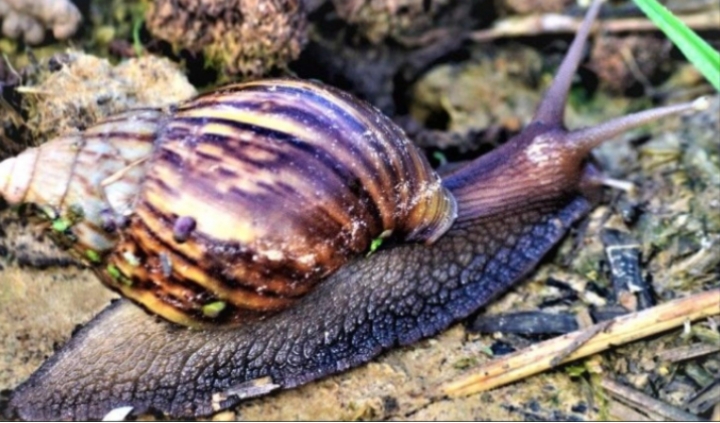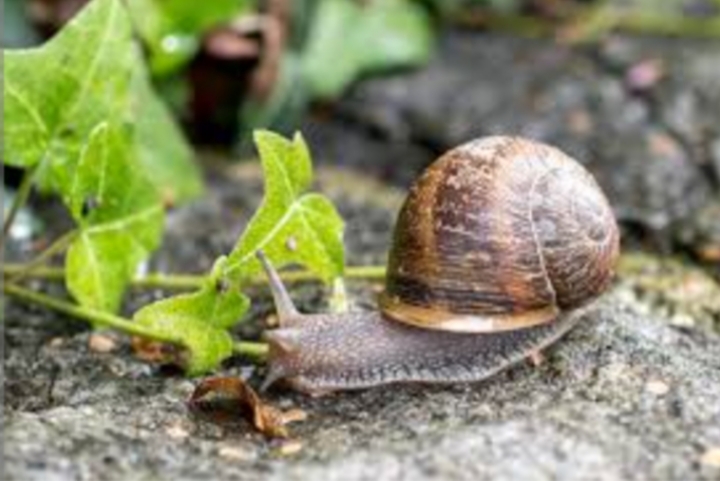How to Start Snail Farming Business in Nigeria/Africa
Can someone have a profitable business farming snails you might be asking?. Well, the simple answer is…Yes. Snail farming, also known as heliciculture, is all about raising snails for various purposes, like food, cosmetics, and medicine. Yup, you heard that right! These slimy creatures have a lot to offer, and snail farming is actually lucrative.

Now, why should we care about snail farming, especially in Nigeria and Africa? Great question! Snail farming plays a big role in these regions, providing a sustainable source of protein-rich food and economic opportunities for many people. Plus, snails are low in fat and cholesterol, making them a healthy alternative to other red meats. So, yeah, snail farming is kind of a big deal around here!
The purpose of this post is to give you everything you need to know about snail farming. I’ll cover everything from how to get started to the nitty-gritty details of caring for farm. So, sit back, relax, and read on.
So, let me give you a little history lesson on snail farming. Did you know that snail farming has been around for centuries? Mhmm, that’s right! People have been raising snails for food and other purposes since ancient times. In fact, snails were considered a delicacy by the ancient Romans and Greeks. Fast forward to today, and snail farming is still a thing, with modern techniques and practices making it easier and more efficient than ever before.
Types of snail farmed
Now, let’s talk about the types of snails that are suitable for farming. There are several species of snails that are commonly farmed around the world, but the two most popular ones are the African giant land snail (Achatina species)

and the garden snail (Helix aspersa).

These snails are well-suited for farming because they are easy to raise, reproduce quickly, and have a high nutritional value. Plus, they’re very resilient to harsh weather conditions, which makes them perfect for farming in different climates and environments.
Alright, now that we know a bit about the history and types of snails, let’s talk about why snail farming is so awesome! Firstly, snail farming is a sustainable and eco-friendly way to produce food. Unlike other livestock, snails don’t require a lot of space, water, or feed to thrive. Plus, snails are packed with protein, vitamins, and minerals, making them a nutritious and healthy food choice.
And let’s not forget about the economic benefits of snail farming! By raising and selling snails, farmers can create jobs, boost local economies, and improve food security in their communities.
Getting Started with Snail Farming
Selecting a Suitable Location for Snail Farming:
Now, the first step in starting your snail farm is to find the perfect spot to set everything up. So, what makes a location suitable for snail farming? Well, snails thrive in warm, humid climates with plenty of vegetation. Ideally, you’ll want to choose a location that receives ample sunlight and has well-drained soil. Avoid areas prone to flooding or extreme temperatures, as these can be harmful to snails.
Building Appropriate Housing or Pens for Snails:
Once you’ve decided on the location, it’s time to construct the housing for your snails! Snails need a safe and secure environment to live and breed, so you’ll want to construct housing or pens that provide protection from predators, harsh weather, and other environmental factors.
You can use materials like wood, bamboo, or even plastic to build simple shelters or pens for your snails. Just make sure to provide plenty of ventilation and space for your snails to move around.
Types of Housing for Snails:
1. Enclosed Pens or Structures:
– Enclosed pens or structures are commonly used in snail farming to provide shelter and protection for snails. These pens are typically constructed using materials like wood, bamboo, or plastic and can vary in size and design.
– Enclosed pens offer protection from predators, extreme weather conditions, and other environmental factors that can affect snail health and productivity.
– Ventilation is essential in enclosed pens to ensure proper airflow and prevent the buildup of moisture, which can lead to mold and bacterial growth.
– Enclosed pens can be customized with features like shelves, ramps, and hiding spots to create a comfortable and stimulating environment for snails.
2. Outdoor Runs or Enclosures:
– Outdoor runs or enclosures provide snails with access to natural sunlight, fresh air, and a variety of plants and vegetation to forage on.
– Outdoor runs are typically fenced or enclosed to prevent snails from wandering off and to protect them from predators.
– Outdoor runs can be constructed using materials like wire mesh, wood, or plastic, and may include shelters for snails to retreat to during harsh weather conditions.
– Outdoor runs offer snails the opportunity to exhibit natural behaviors like burrowing, grazing, and exploring their surroundings, which can contribute to their overall health and well-being.
3. Deep Litter System:
– The deep litter system involves spreading a thick layer of organic bedding material, such as straw, leaves, or wood shavings, on the floor of the snail housing.
– As snails move around and burrow into the bedding material, they help aerate and decompose the litter, creating a nutrient-rich substrate for them to feed on.
– The deep litter system provides insulation, moisture retention, and microbial activity, which can help regulate temperature and humidity levels in the snail housing.
– Regular turning and replenishment of the litter are necessary to maintain cleanliness and prevent the buildup of ammonia and other harmful substances.
4. Combination Systems:
– Some snail farmers may opt for a combination of housing systems to provide their snails with the best of both worlds.
– For example, they may use enclosed pens for housing snails indoors and outdoor runs or enclosures for allowing snails to graze and forage outdoors.
– Combination systems allow snail farmers to capitalize on the benefits of both enclosed and outdoor environments while minimizing their respective drawbacks.
These are some of the common types of housing for snails used in snail farming. Each housing system has its advantages and considerations, and the choice of housing will depend on factors such as climate, available space, and management preferences.
Sourcing Snails for Your Farm
Now that you’ve got your snail farm set up, it’s time to bring in the stars of the show – the snails themselves! There are a few different ways you can source snails for your farm. You can collect them from the wild or purchase them from local farmers or suppliers. Whichever method you choose, just make sure to select healthy, disease-free snails to ensure the success of your farm.
Equipment and Materials Needed for Snail Farming:
Let’s talk about the tools and materials you’ll need to run your snail farm smoothly. Some essential equipment and materials for snail farming include:
1. Housing or pens for snails
2. Substrate or bedding material for snails to burrow in
3. Water containers for providing fresh water to your snails
4. Feeding dishes or trays for offering snail food
5. Garden tools for maintaining the farm, such as shovels, rakes, and wheelbarrow.
6. Protective gear like gloves and boots for handling snails and working in the farm
Having these essential items on hand, you’ll be well-equipped to care for your snails.
Feeding and Nutrition Requirements for Snails
Knowing what to feed your snails is important. So, what do snails eat? Well, snails are versatile when it comes to food – they’ll eat anything! Their diet mainly consists of fruits, vegetables, leafy greens, and other plant matter.
You can also supplement their diet with calcium-rich foods like eggshells or limestone to help keep their shells strong and healthy. Oh, and don’t forget to provide plenty of fresh, clean water for your snails to drink.
Temperature and Humidity Control in Snail Farming
Snails have specific temperature and humidity requirements to thrive. Ideally, you’ll want to keep the temperature in your snail farm between 20°C and 25°C, with humidity levels around 70% to 90%. You can achieve this by providing adequate ventilation, shading, and moisture-retaining bedding materials in their housing or pens.
Oh, and make sure to monitor the temperature and humidity regularly to ensure your snails are active.
Health Management and Disease Prevention
Just like any other livestock, snails can get sick too. That’s why it’s good to practice good health management and disease prevention on your snail farm. Keep your snail housing clean and free of debris, and remove any sick or dead snails immediately to prevent the spread of disease.
You can also minimize the risk of disease by providing a balanced diet, avoiding overcrowding, and practicing good hygiene practices. And if you notice any signs of illness or unusual behavior in your snails, don’t hesitate to seek advice from a veterinarian or snail farming expert.
Breeding and Reproduction in Snails
Breeding and reproduction are essential aspects of snail farming if you want to grow your snail population and increase your farm’s productivity. Snails are hermaphrodites, which means they have both male and female reproductive organs.
They can self-fertilize, but it’s usually more efficient to mate with another snail. To encourage breeding, provide a conducive environment with plenty of food, moisture, and shelter. And be patient – snails can take their time when it comes to making babies!.
By following these snail farming practices, you’ll be well on your way to running a successful and thriving snail farm. So, keep feeding, keep monitoring your farm.
Challenges and Considerations in Snail Farming
Let’s take a closer look at some of the challenges you might encounter along the way on your snail farm.
So, what are some of the hurdles that snail farmers often face? Well, for starters, predators can be a real pain in the shell! Snails have plenty of natural enemies, including birds, rodents, ants and even other snails. Keeping these predators at bay can be a constant battle for snail farmers.
Then there’s the weather – extreme temperatures, heavy rains, and droughts can all wreak havoc on snail farms, affecting the health and productivity of the snails. And let’s not forget about diseases and parasites, which can quickly spread and decimate a snail population if not properly managed. Well, being a snail farmer isn’t easy!
Solutions and Mitigation Strategies for Overcoming Challenges
There are ways to overcome these challenges and keep your snail farm thriving!. One solution is to implement predator-proofing measures, such as installing net fences/netting. You can also create sheltered areas or hiding spots for your snails to retreat to when the weather gets harsh. When it comes to diseases and parasites, practicing good hygiene, quarantine, and treatment protocols can help minimize the risk of outbreaks and keep your snails healthy.
Oh, and don’t forget to stay informed and keep learning – knowledge is your best defense against any challenge faced.
By being aware of the challenges and considerations in snail farming and implementing proactive measures to address them, you can scale through the ups and downs of this agricultural venture and build a successful and sustainable snail farm.
So, don’t let those challenges slow you down every business has its own unique challenges.
Frequently asked questions
How long does it take to farm snails?
The time it takes to farm snails varies depending on various factors such as the species of snails, environmental conditions, and farming practices. Generally, it takes around 6 months to 1 year for snails to reach maturity and be ready for harvest. However, some species may take longer, so it’s important to be patient and provide proper care and management to ensure the success of your snail farm.
Is snail farming profitable?
Yes, snail farming can be profitable when done correctly. With proper planning, management, and market access, snail farming can generate a steady income stream for farmers. Snails are in high demand for their nutritional value and culinary versatility in Nigeria, making them a lucrative venture for aspiring farmers.
However, like any business, snail farming requires dedication, investment, and careful attention to maximize profitability.
What is the best method of snail farming?
The best method of snail farming depends on various factors such as the available resources, climate, and personal preferences of the farmer. Some common methods of snail farming include free-range farming, intensive farming, and semi-intensive farming. Each method has its advantages and considerations, so it’s essential to choose the method that aligns with your goals and resources.
What are the best foods for snails?
Snails have a diverse diet and can eat a variety of foods, including fruits, vegetables, leafy greens, and grains.
What makes snails grow faster?
Several factors can contribute to the faster growth of snails, including providing optimal conditions such as suitable temperature, humidity, and ventilation. Additionally, feeding snails a nutritious diet rich in protein, vitamins, and minerals can promote faster growth. Regular monitoring and management of the snail farm to prevent diseases, parasites, and other stressors can also help ensure the healthy growth of snails.
How fast do snails multiply?
Snails are prolific breeders and can multiply rapidly under favorable conditions. On average, snails can lay eggs multiple times per year, with each clutch containing dozens to hundreds of eggs, depending on the species.
Some species of snails may lay eggs more frequently than others, so it’s essential to monitor their reproductive behavior and provide suitable conditions for breeding.
Do snails eat plantain leaves?
Yes, snails can eat plantain leaves and other types of foliage. Plantain leaves are a nutritious and readily available food source for snails, making them an excellent choice for feeding your snails. Just make sure to wash and chop the plantain leaves into small pieces to make it easier for the snails to consume.
What is the lifespan of a snail?
On average, snails can live for several years in captivity, with some species living up to 5-7 years or even longer. Providing proper care, nutrition, and a suitable habitat can help ensure the longevity and well-being of your snails.
Closing remarks
If you already have a snail farm tell us your experience farming snails in the comment section






